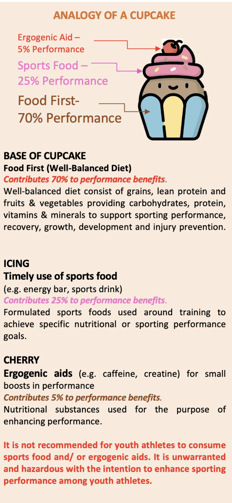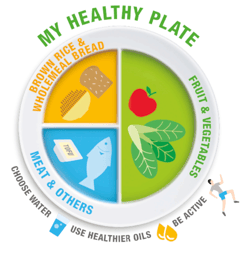"Are supplements good for my kid? How to ensure that my children have a well-balanced diet?" These are just some of the struggles of parents who are trying to feed the right stuff to their young ones to ensure that they grow up healthy and strong.
A common misconception is that supplements and vitamins are essential in improving dietary quality. Most supplements are not subject to strict testing with subsequent potential risks to health issues. An overconsumption of nutrients may also occur, as the supplement dosage is inaccurate, unbalanced or excessive. Why not eliminate these risks by eating quality whole food first rather than relying on supplements?
The Food First approach encourages children to eat a variety of foods, which ultimately aids them in achieving good health. Food variety, intake timing and volumes can be tailored to provide sufficient amounts of nutrients to meet your child’s physical demands.

Foundation of the Food First Approach:
- Consists of grains, leaf protein, dairy, fruits and vegetables
- Provides variety of nutrients to support optimal growth and development
Physical activity has an impact on overall energy demands. Instead of consuming supplements to meet these demands, overall food intake should be able to adequately fuel the child. Performance nutrition guidelines for youth athletes and children emphasise meeting training demands and physical activity with appropriate food and fluid intakes. Using the analogy of a cupcake helps us better understand the proportions of how to modify your diet when involved in regular physical activity.
My Healthy plate (Health Promotion Board, 2019) helps you make the right choices to stay well nourished. It helps us plan our meals to include appropriate amounts of carbohydrates, protein, fat, fruit and vegetables, which support proper bodily growth and development.
Carbohydrates
Carbohydrates are the fuel foods that provide our bodies with the fuel for daily activities. They also improve concentration and keeps you alert by maintaining a consistent blood sugar level. Examples of carbohydrate rich fuel foods are cereals and grains, dairy and soy products, fruits and starchy vegetables.
Protein

It is important to ensure that your child is getting enough protein in their diet to optimise growth and development. A more physically active child requires more protein in their diet compared to a less physically active child. It is recommended to include protein rich foods at snacks and meals throughout the day for growth and repair, especially breakfast. Protein rich foods include meat, seafood, eggs, dairy and soy products, legumes, nuts and seeds.
Vegetables
Brightly coloured fruit and vegetables not only provide your child with fibre, but also provides abundant vitamins, minerals and antioxidants that helps boost immunity. Including more colours in your fruits and vegetables also helps with disease fighting chemicals (phytochemicals).
Fats
Although fats are believed to be detrimental to the body, small amounts
(3-4 teaspoons) of animal and plant fat are required for growth and development of your child. Foods with healthy unsaturated fat include fish, nuts, seeds and avocados. Dairy products such as milk, cheese and yogurt can also be offered.
Conclusion
In conclusion, food offers a powerhouse of nutrients which can all be obtained from a well-balanced whole food diet. My Healthy Plate (Health Promotion Board, 2019) provides you with an easy-to-understand visual guide for creating a balanced healthy meal, making it easier for you to plan portions accordingly.
Food is a safer approach to fortifying a diet with extra energy, protein and nutrients compared to supplements, which carry a risk of overconsumption and health scares.
References
Buell, J. L., Franks, R., Ransone, J., Powers, M. E., Laquale, K. M., & Carlson-Phillips, A. (2013). National Athletic Trainers' Association position statement: evaluation of dietary supplements for performance nutrition.Journal of athletic training,48(1), 124-136. Burd, N. A., Beals, J. W., Martinez, I. G., Salvador, A. F., & Skinner, S. K. (2019). Food-first approach to enhance the regulation of post-exercise skeletal muscle protein synthesis and remodeling.Sports Medicine,49(1), 59-68. Health Promotion Board (2019). My Health Plate retrieved 9 December 2019, from https://www.healthhub.sg/programmes/55/my-healthy-plate Thomas, D. T., Erdman, K. A., & Burke, L. M. (2016). Position of the Academy of Nutrition and Dietetics, Dietitians of Canada, and the American College of Sports Medicine: nutrition and athletic performance.Journal of the Academy of Nutrition and Dietetics,116(3), 501-528. Rothwell, J., Australian Sports Anti-Doping Authority. (2018). Blog: Digesting a Food First approach. Retrieved from https://www.sportintegrity.gov.au/news/blog/2018-12/digesting-food-first-approachIn Collaboration with:






